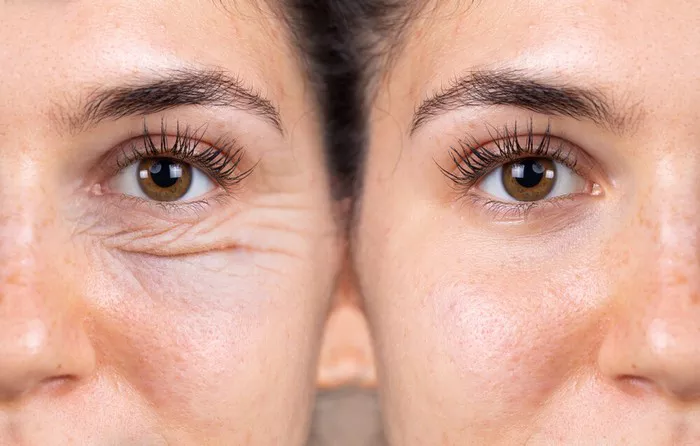Eye bag surgery, also known as lower blepharoplasty, is a cosmetic surgical procedure designed to reduce the appearance of bags and puffiness under the eyes. It is a popular choice for individuals seeking a more youthful and refreshed look. If you are considering eye bag surgery, one important aspect to consider is the recovery period. In this article, we will explore the recovery process after eye bag surgery, including what to expect during the healing process and the approximate timeframe for a full recovery.
Immediate Post-Surgery Period
After eye bag surgery, the immediate post-surgery period involves several important factors that contribute to the healing process:
- Bandages and Dressings: Following the procedure, the surgical area may be covered with sterile bandages or dressings to protect the incisions and promote healing. These bandages will usually be removed within a day or two after surgery.
- Swelling and Bruising: Swelling and bruising around the eyes and cheek area are common after eye bag surgery. These side effects may be more pronounced during the first few days following the procedure and gradually subside over time.
- Discomfort and Pain: Mild to moderate discomfort and pain around the surgical site are normal during the initial recovery period. Your surgeon may prescribe pain medication or recommend over-the-counter pain relievers to manage any discomfort.
- Activity Restrictions: To ensure proper healing, it is crucial to follow your surgeon’s instructions regarding activity restrictions. You will likely be advised to avoid strenuous activities, heavy lifting, bending over, and any activities that may increase blood flow to the surgical area.
- Follow-up Appointments: Your surgeon will schedule follow-up appointments to monitor your progress, remove any sutures, and assess your healing. These appointments are essential for ensuring a smooth recovery.
Recovery Milestones
While the recovery process can vary from person to person, there are several common milestones that mark the healing progress after eye bag surgery:
-
First Week
During the first week after surgery, it is normal to experience swelling, bruising, and some discomfort. You may also have blurry vision or sensitivity to light. Applying cold compresses and keeping your head elevated can help reduce swelling. It is important to rest and avoid activities that could strain the eyes or increase blood flow to the area.
-
First Month
In the first month, swelling and bruising should gradually improve. You may still experience mild swelling, but it should be significantly reduced compared to the immediate post-surgery period. Most individuals can resume light activities and return to work within a week or two, depending on the nature of their job. However, it is important to continue avoiding strenuous activities and to follow your surgeon’s guidelines for optimal healing.
-
Six Weeks
By the six-week mark, the majority of swelling and bruising should have subsided. The incision scars will still be present but will continue to fade over time. You may begin to see the full results of the surgery as the healing process progresses.
-
Three to Six Months
Between three and six months after eye bag surgery, the majority of the swelling should have resolved, and the final results of the procedure should be visible. The incision scars will continue to fade and become less noticeable with time.
Tips for a Smooth Recovery
While each individual’s recovery process may differ, there are several tips that can help promote a smooth and comfortable healing period after eye bag surgery:
- Follow Surgeon’s Instructions: It is crucial to follow your surgeon’s post-operative instructions carefully. This includes taking prescribed medications as directed, keeping the surgical area clean, and attending follow-up appointments.
- Protect Your Eyes: Avoid rubbing or touching your eyes during the recovery period to prevent any irritation or potential complications. Wearing sunglasses when outdoors can provide added protection from sunlight and wind.
- Use Cold Compresses: Applying cold compresses to the surgical area can help reduce swelling and provide relief. Be sure to follow your surgeon’s guidelines regarding the timing and duration of cold compress application.
- Keep Your Head Elevated: Sleeping with your head elevated can help minimize swelling. Use an extra pillow or consider using a wedge-shaped pillow to maintain a comfortable and elevated position.
- Maintain a Healthy Lifestyle: Eating a nutritious diet, staying hydrated, and getting sufficient rest can contribute to the healing process. Avoid smoking and alcohol consumption, as these can interfere with the body’s ability to heal.
Patience and Expectations
It is important to have realistic expectations and understand that the full results of eye bag surgery may take time to become apparent. Every individual’s healing process is unique, and factors such as age, overall health, and individual recovery rates can influence the timeframe for a full recovery.
During the recovery period, it is common for the surgical area to undergo various changes, including fluctuations in swelling and the gradual fading of incision scars. It is essential to have patience and allow your body to heal at its own pace.
Consulting Your Surgeon
If you have any concerns or questions during the recovery process, do not hesitate to contact your surgeon. They are the best resource for addressing any post-operative concerns and providing personalized guidance based on your specific circumstances.
Conclusion
Recovering from eye bag surgery requires patience and understanding of the healing process. While individual experiences may vary, the approximate timeline for a full recovery from eye bag surgery ranges from several weeks to a few months. By following your surgeon’s instructions, taking care of yourself, and allowing your body time to heal, you can expect to enjoy the long-term benefits of a more refreshed and rejuvenated appearance.


